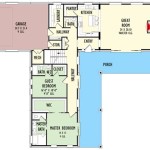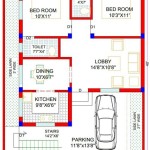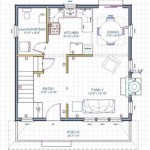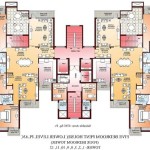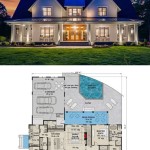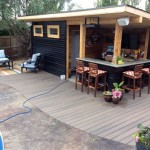1 ½ Story House Plans: A Blend of Charm and Functionality
1 ½ story house plans represent a captivating architectural style, bridging the gap between the compactness of a single-story ranch and the expansive verticality of a full two-story home. Their defining characteristic is a main level combined with a partially finished upper level nested within the roof structure. This type of design often evokes feelings of warmth, historical charm, and efficient space utilization. The steep roof pitch, dormers, and often exposed rafters contribute significantly to their distinct aesthetic appeal.
These house plans are particularly well-suited for individuals and families seeking a home with character, optimized space, and a manageable footprint. The partial second story can be adapted for a variety of uses, from bedrooms and bathrooms to recreational spaces and home offices. This adaptability makes 1 ½ story homes a versatile choice for diverse lifestyles and household sizes.
The historical roots of this architectural style can be traced back to various regions, including New England and the Midwest in the United States. These homes were frequently built on smaller lots and were designed to maximize usable living space within a limited area. The style has evolved over time, incorporating modern amenities and building techniques while retaining its inherent charm. Today, 1 ½ story house plans are available in a wide array of architectural styles, including Craftsman, Farmhouse, and Cottage designs, ensuring stylistic compatibility with a range of preferences.
Key Point 1: Understanding the Characteristics of 1 ½ Story Homes
The defining feature of a 1 ½ story home lies in its upper level. Unlike a full two-story house, the second floor in a 1 ½ story design is typically characterized by sloping ceilings and dormers. Dormers are windows that project from the roof, providing headroom and natural light to the upper level. The wall height on the second floor is often reduced, creating a cozier atmosphere. This architectural element significantly impacts both the interior space and the exterior aesthetic of the home.
The reduced wall height can present both challenges and opportunities. It is crucial to carefully consider furniture placement and ceiling heights to maximize usability and comfort within the upper level. However, the sloped ceilings can also create unique architectural details and a sense of intimacy. Many designs incorporate built-in storage solutions and clever space-saving techniques to optimize functionality within the limited square footage.
Roof pitch is another critical characteristic of 1 ½ story homes. The steeper pitch of the roof is essential for accommodating the upper level within the roof structure. This steep pitch also contributes to the overall visual appeal of the home, adding to its charming and distinctive character. The roof structure often plays a significant role in the overall design, with exposed rafters or decorative elements adding to the aesthetic appeal.
The main level of a 1 ½ story home typically houses the primary living areas, such as the kitchen, living room, and master bedroom. This arrangement allows for convenient single-level living while still providing additional space on the upper level for bedrooms, bathrooms, or other functional areas. The separation of living areas on the main level from sleeping quarters on the upper level can enhance privacy and create a more comfortable living environment.
Key Point 2: Advantages and Disadvantages of Choosing a 1 ½ Story House Plan
Selecting a 1 ½ story house plan presents numerous advantages. One primary benefit is the efficient use of space. These plans often maximize usable living area within a smaller footprint, making them ideal for homeowners seeking a compact and manageable home. The partially finished upper level provides additional space without the cost and structural requirements of a full second story.
Another advantage is the aesthetic appeal. 1 ½ story homes often exude a sense of charm and historical character. The steep roof pitch, dormers, and other architectural details contribute to their unique and visually appealing design. This architectural style is particularly well-suited for blending into established neighborhoods with a traditional aesthetic.
Cost-effectiveness can also be a significant advantage. Building a 1 ½ story home can often be more cost-effective than constructing a full two-story house with a similar total square footage. The reduced wall height on the upper level and the simplified roof structure can contribute to lower construction costs. This can make 1 ½ story homes an attractive option for budget-conscious homeowners.
However, there are also potential disadvantages to consider. The sloped ceilings on the upper level can restrict headroom and limit furniture placement. Careful planning and design are essential to maximize usability and comfort within the limited space. It is crucial to consider the needs of all occupants and ensure that the upper level is functional and accessible for everyone.
Accessibility can also be a concern, particularly for individuals with mobility issues. Stairs are required to access the upper level, which may present challenges for some homeowners. While some designs may incorporate elevators or chairlifts, these additions can significantly increase construction costs. It is important to carefully consider accessibility when evaluating 1 ½ story house plans.
Temperature regulation can also be a challenge in some 1 ½ story homes. The upper level, located directly beneath the roof, may be more susceptible to temperature fluctuations than other areas of the house. Proper insulation and ventilation are crucial to maintain a comfortable indoor climate. Consider incorporating energy-efficient windows and roofing materials to mitigate temperature extremes.
Key Point 3: Considerations for Selecting and Modifying 1 ½ Story House Plans
When choosing a 1 ½ story house plan, it is essential to carefully consider several factors. One crucial aspect is the size and layout of the main level. Ensure that the main floor provides adequate space for the primary living areas, such as the kitchen, living room, and master bedroom. Consider the layout and flow of the rooms to ensure a comfortable and functional living environment.
The design of the upper level is equally important. Pay close attention to the ceiling heights, dormer placement, and overall layout of the space. Consider how the upper level will be used and ensure that it meets the specific needs of the occupants. Maximize usable space by incorporating built-in storage solutions and clever space-saving techniques.
Exterior aesthetics should also be a key consideration. Choose a house plan that complements the surrounding environment and reflects your personal style. Consider the materials, colors, and architectural details to create a visually appealing and harmonious design. The exterior of the home should be both functional and aesthetically pleasing.
Modifying existing 1 ½ story house plans is a common practice. Many homeowners choose to customize their plans to better suit their individual needs and preferences. Common modifications include adding or removing dormers, altering the layout of the upper level, and incorporating custom architectural details. When modifying a house plan, it is essential to work with a qualified architect or designer to ensure that the changes are structurally sound and aesthetically pleasing.
Consider the placement of windows and doors to maximize natural light and ventilation. Strategically positioned windows can enhance the beauty of the home and create a more comfortable living environment. Natural light plays a crucial role in creating a welcoming and inviting atmosphere. Consider the orientation of the home to maximize sunlight exposure during the day.
Finally, thoroughly research and understand local building codes and zoning regulations. These regulations can significantly impact the design and construction of your home. Ensure that your chosen house plan complies with all applicable codes and regulations. Obtain all necessary permits and approvals before commencing construction. Consulting with local building officials can help ensure a smooth and successful building process.

One And A Half Story House Plans 84 Lumber

1 2 Story House Plan 178 1251 3 Bedrm 1675 Sq Ft Home Theplancollection

1 2 Story House Plans

Image Result For 1 2 Story Open Floor Plan Bedroom House Plans With Loft Garage

One And A Half Story House Plans 84 Lumber

1 2 Story 4 Bedroom Modern Farmhouse House Plan Summerfield Plans Floor

Contemporary Home Plan 3 Bedrms 2 Baths 1485 Sq Ft 146 2575

One And A Half Story House Plans 84 Lumber

Plan Of A Country House With Loft In Modern Style

1 2 Story Modern Farmhouse House Plan Rochester Plans

